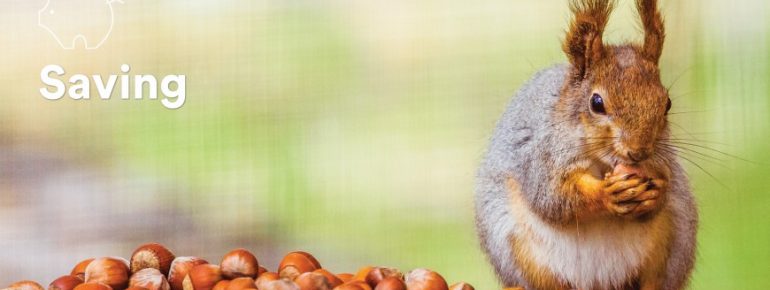Leadership
What Can Squirrels Teach Us About Saving?

Squirrels have the ability to change their behavior to survive, including finding, storing, and retrieving nuts. This likens them to humans who also change their behavior in order to survive and meet future goals, such as saving money.
Much as we assess which investments have the potential to provide long-term growth or preserve capital, squirrels use their sharp peripheral vision to size up nuts to see which ones are good to eat. Nuts that sprout use up valuable nutrients. A savvy squirrel will use its sharp teeth to cut off a nut’s sprouting mechanism, thereby preserving its food value for winter.
When evaluating an investment for the future, such as a mutual fund, you want to be sure that the strategy it follows has the potential to deliver the results you expect over many years, often decades. In a way, you’re sizing up your own nuts!
Looking at the fund’s past performance is an often-useful way to evaluate returns, but it shouldn’t be the sole factor. (Remember, past performance does not predict future returns.) In addition, look at the consistency of the fund’s returns over time. How did it do against its benchmark in a down market? A fund that consistently underperforms in a down market is like a sprouting nut. Consider avoiding it, or replacing it with another option.
According to researchers, fox squirrels move thousands of nuts among five or more locations to discourage pilfering by rival squirrels.
By avoiding losses, squirrels reduce risk. You do the same thing when diversifying a portfolio. Rather than putting all your “fund nuts” in one basket, you may be able to lessen the risk of experiencing a large loss by spreading your investments across multiple funds. There’s less likelihood of all investments going down in value at the same time.
Investors diversify by including stocks, bonds, and cash in their portfolios. Stocks, which represent shares of ownership in a company, usually perform differently from bonds or cash. Over long periods, stocks generally have provided the greatest returns, but with the most risk. Corporate bonds, which are essentially loans to a company, offer somewhat less return potential, but with less risk than stocks. Cash or “cash equivalents” typically are the least risky asset class, but also offer the least return.
Having the right balance of asset classes may help you save more for the future in a smart way — just like our crafty friends, the squirrels.
Natalie Angier, “Nut? What Nut? The Squirrel Outwits to Survive,” New York Times, July 5, 2010. http://www.nytimes.com/2010/07/06/science/06angi.html
2 “Fox squirrels show long-term investment savvy when hoarding nuts,” Berkeley News, October 3, 2012. http://news.berkeley.edu/2012/10/03/squirrelnuts/







